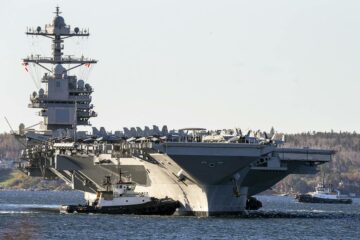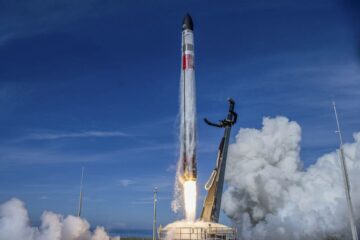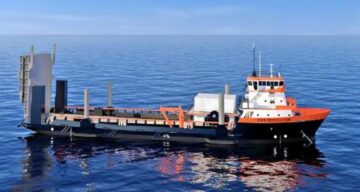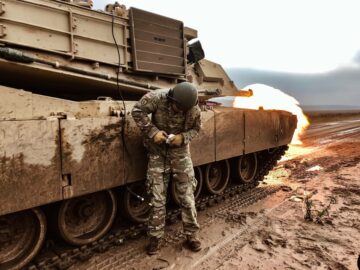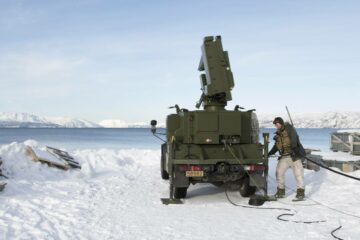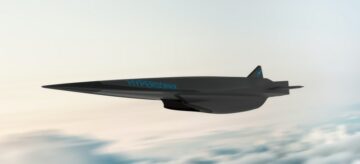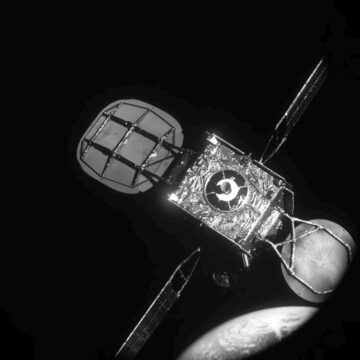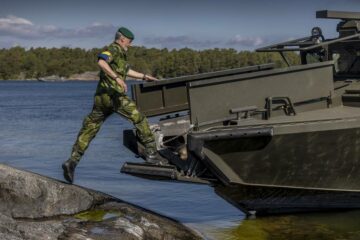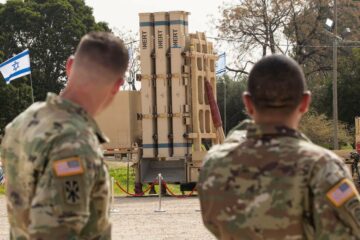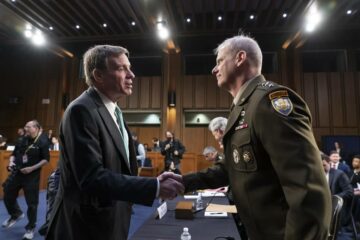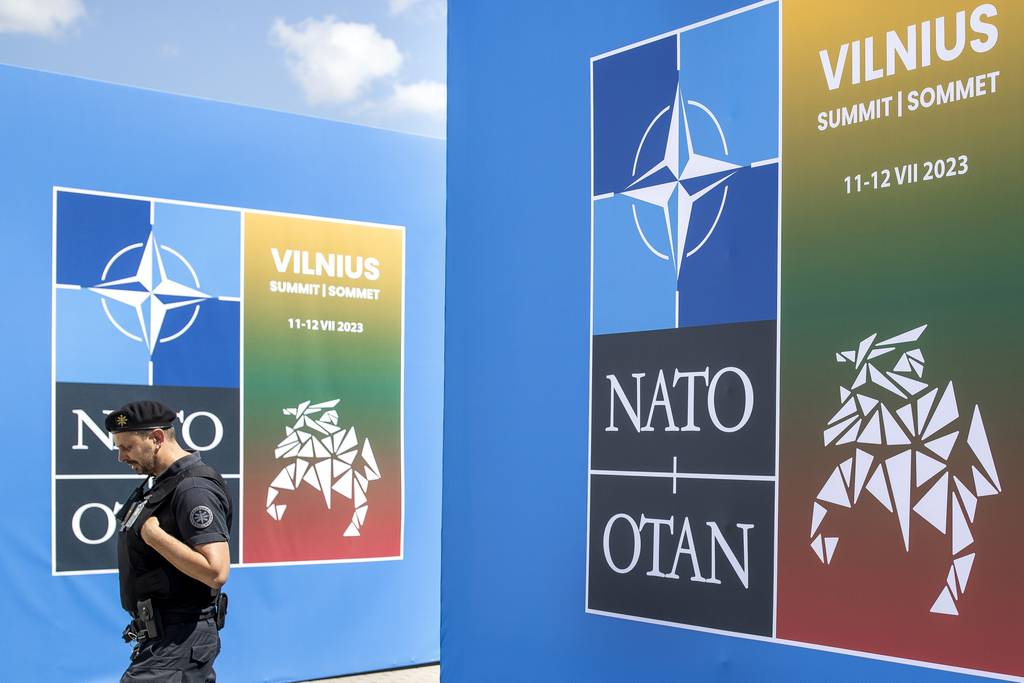
WASHINGTON — It’s been an early winter of discontent for Ukraine supporters in the nation’s capital.
President Volodymyr Zelenskyy visited in December to lobby Congress for more military aid. He left without progress on a mammoth national security spending bill, with $61 billion in Ukraine-related aid, which is still frozen.
Meanwhile, the Pentagon has run out of money to replace the weapons it sends to Kyiv. Defense officials say that means a pause in further support.
Hoping for a thaw — perhaps appropriately during Washington’s first real snow of the season — European and Canadian lawmakers who chair their countries’ foreign affairs committees are visiting to continue arguing Ukraine’s case.
Laurynas Kasčiūnas, chair of the national security and defense committee in Lithuania’s parliament, is part of that delegation, which will meet with think tanks and members of Congress.
He spoke with Defense News about NATO’s investments in its Eastern Flank, Ukraine’s fight and the threat Russia may pose to Europe.
This interview was edited for length and clarity.
How would you describe the state of the war in Ukraine?
Russia did two main things last year. One, they adapted to a wartime economy and a [stronger] defense industry. They can produce — despite the sanctions — ammunition, artillery, tanks and so on.
Second, they solved the problem of motivation in the army, creating so-called mercenaries — paying quite a low salary to a very low [social class] of people. For them, this money and the army is a social lift.
One option [for Russian President Vladimir Putin] is waiting for [Donald] Trump for a deal. The second option is to devastate Ukraine so much that even the Western community will say: “Go to negotiations.”
Do you anticipate another round of mobilization after Russia’s elections in March?
Mobilization after the elections is not a problem. They’ve transformed conscription with this “mercenary” army.
For Ukraine, manpower is a big challenge. These guys who were fighting from 2014 on — the professionals — many of them are already out, dead or injured.
Russia’s manpower is still four or five times bigger.
How long will it take for Russia to reconstitute its forces to prewar levels?
If we consider in planning a real conventional, division-level war: five to seven years. If you imagine some semi-conventional, hybrid [war], they need maybe two to three years.
The army is one thing, but at the same time you need to be flexible for such scenarios. We need border guards with military standards, we need special police forces.
What are Ukraine’s most pressing needs?
Because I’m pushing drone capability in Lithuania, I asked Zelenskyy what his need was annually. He said if you’re talking about small drones, it’s at least 3 million to 5 million, and Ukraine can produce about 1 million.
I asked what kind of weapons he needs. He said drones, artillery munitions and electronic warfare.
What would you like to see come from the NATO summit in July?
One thing is the Ukraine question. But another thing for us is the eastern flank [of countries in the alliance]. From the Vilnius summit [last year] to the Washington summit [this year], what kind of achievements do we have? The Russians are building up, despite sanctions, despite the war in Ukraine. So let’s compare what we are doing.
We did a lot. The forward defense concept, which came back in defense planning, is very important. For us, it was a crucially important decision by Germany to place a brigade for full stationing in Lithuania, which will be done in two to three years. It’s a good thing, but are we fast enough?
Noah Robertson is the Pentagon reporter at Defense News. He previously covered national security for the Christian Science Monitor. He holds a bachelor’s degree in English and government from the College of William & Mary in his hometown of Williamsburg, Virginia.
- SEO Powered Content & PR Distribution. Get Amplified Today.
- PlatoData.Network Vertical Generative Ai. Empower Yourself. Access Here.
- PlatoAiStream. Web3 Intelligence. Knowledge Amplified. Access Here.
- PlatoESG. Carbon, CleanTech, Energy, Environment, Solar, Waste Management. Access Here.
- PlatoHealth. Biotech and Clinical Trials Intelligence. Access Here.
- Source: https://www.defensenews.com/global/europe/2024/01/17/five-questions-with-lithuanias-national-security-committee-chair/
- :has
- :is
- :not
- $UP
- 1
- 2014
- 70
- 9
- a
- About
- achievements
- adapted
- Affairs
- After
- Aid
- Alliance
- already
- ammunition
- an
- and
- Annually
- Another
- anticipate
- appropriately
- ARE
- Army
- asked
- At
- back
- BE
- been
- Big
- bigger
- Bill
- Billion
- border
- Building
- but
- by
- came
- CAN
- Canadian
- capability
- capital
- case
- Chair
- chairman
- challenge
- christian
- clarity
- class
- College
- come
- committee
- community
- compare
- concept
- Congress
- Consider
- continue
- conventional
- countries
- covered
- Creating
- crucially
- dead
- deal
- December
- decision
- Defense
- Degree
- delegation
- describe
- Despite
- DID
- discontent
- do
- doing
- donald
- done
- drone
- Drones
- during
- Early
- eastern
- economy
- edited
- Elections
- Electronic
- English
- enough
- Ether (ETH)
- Europe
- European
- Even
- FAST
- fight
- fighting
- First
- five
- flexible
- For
- Forces
- foreign
- Forward
- four
- from
- frozen
- full
- further
- Germany
- good
- Government
- Have
- he
- his
- holds
- HTML
- HTTPS
- Hybrid
- i
- if
- images
- imagine
- important
- in
- industry
- Interview
- Investments
- IT
- ITS
- jpg
- July
- Kind
- Last
- Last Year
- lawmakers
- least
- left
- Length
- levels
- like
- Lithuania
- Lobby
- Long
- Lot
- Low
- Main
- many
- March
- mary
- May..
- maybe
- means
- Meet
- Members
- Military
- million
- mobilization
- money
- Monitor
- more
- most
- much
- National
- national security
- Nations
- Need
- needs
- negotiations
- news
- of
- officials
- on
- ONE
- Option
- or
- out
- parliament
- part
- pause
- paying
- pentagon
- People
- perhaps
- Place
- planning
- plato
- Plato Data Intelligence
- PlatoData
- Police
- pose
- poses
- president
- pressing
- previously
- Problem
- produce
- professionals
- Progress
- Pushing
- Putin
- question
- Questions
- quite
- real
- replace
- reporter
- Republic
- round
- Run
- Russia
- russian
- Russian president
- Russian President Vladimir Putin
- Russians
- s
- Said
- salary
- same
- Sanctions
- say
- scenarios
- Science
- Season
- Second
- security
- see
- sends
- seven
- small
- snow
- So
- Social
- some
- special
- Spending
- standards
- State
- Still
- stronger
- such
- Summit
- support
- supporters
- Take
- talking
- Tanks
- that
- The
- The State
- their
- Them
- These
- they
- thing
- things
- Think
- this
- this year
- threat
- three
- time
- times
- to
- transformed
- trump
- two
- Ukraine
- Ukraines
- us
- very
- virginia
- visited
- Vladimir Putin
- Volodymyr Zelenskyy
- Waiting
- war
- War in Ukraine
- was
- washington
- we
- Weapons
- were
- Western
- What
- which
- WHO
- will
- william
- Winter
- with
- without
- would
- year
- years
- you
- zephyrnet

